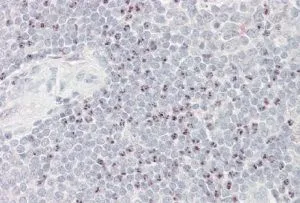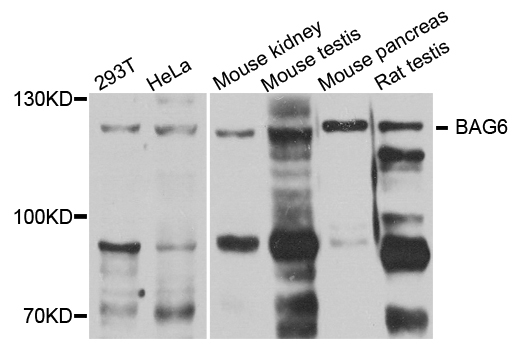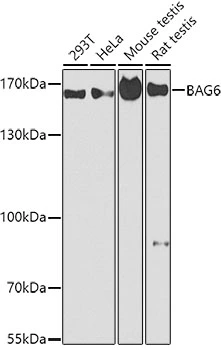
IHC-P analysis of human spleen using GTX88511 BAT3 antibody, Internal. Antigen retrieval : citrate buffer pH 6 Dilution : 3.8microg/ml
BAT3 antibody, Internal
GTX88511
ApplicationsImmunoHistoChemistry, ImmunoHistoChemistry Paraffin
Product group Antibodies
TargetBAG6
Overview
- SupplierGeneTex
- Product NameBAT3 antibody, Internal
- Delivery Days Customer7
- Application Supplier NoteIHC-P: 3-5microg/ml. *Optimal dilutions/concentrations should be determined by the researcher.Not tested in other applications.
- ApplicationsImmunoHistoChemistry, ImmunoHistoChemistry Paraffin
- CertificationResearch Use Only
- ClonalityPolyclonal
- Concentration0.50 mg/ml
- ConjugateUnconjugated
- Gene ID7917
- Target nameBAG6
- Target descriptionBAG cochaperone 6
- Target synonymsBAG-6, BAT3, D6S52E, G3, large proline-rich protein BAG6, BAG family molecular chaperone regulator 6, BCL2 associated athanogene 6, HLA-B-associated transcript 3, large proline-rich protein BAT3, protein G3, protein Scythe, scythe
- HostGoat
- IsotypeIgG
- Protein IDP46379
- Protein NameLarge proline-rich protein BAG6
- Scientific DescriptionThis gene was first characterized as part of a cluster of genes located within the human major histocompatibility complex class III region. This gene encodes a nuclear protein that is cleaved by caspase 3 and is implicated in the control of apoptosis. In addition, the protein forms a complex with E1A binding protein p300 and is required for the acetylation of p53 in response to DNA damage. Multiple transcript variants encoding different isoforms have been found for this gene. [provided by RefSeq, Jul 2008]
- Storage Instruction-20°C or -80°C,2°C to 8°C
- UNSPSC12352203






